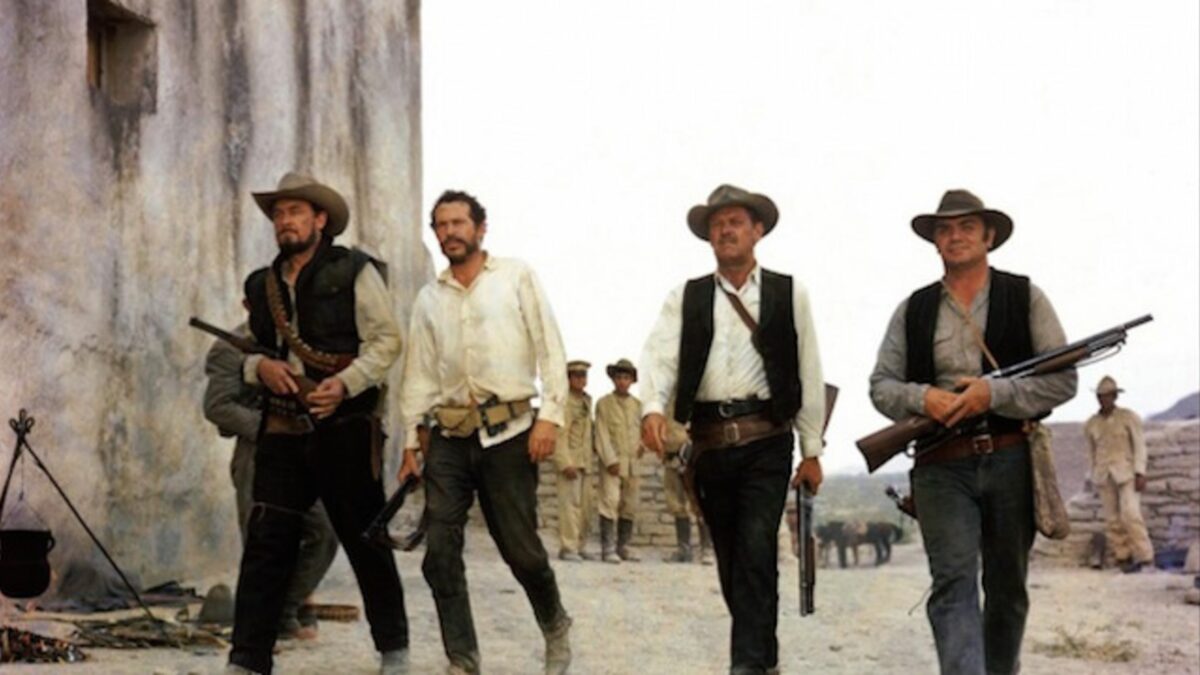Half a Century – The Wild Bunch
Look around you: the torrents of blood are being spilled so cheerfully as if it were champagne – a delirious and disturbingly accurate observation of the world of one of Dostoevsky’s characters, happens to be stereotypical and only partly applicable to Sam Peckinpah’s oeuvre, as violence in films of such an ingenious type is one of the central topics, yet not the most important one. The nonconformity of expressive individuals in transitory times and their disobedience to the modern rules that most often result in a loss – are the basis of the poetics of the melancholic Sam.
Filmed in a milestone year, as well as The Midnight Cowboy, Easy Rider, They Shoot Horses, Don’t They?, or Butch Cassidy and the Sundance Kid…, it builds on thematically and goes beyond his earlier films, such as Ride the High Country and Major Dundee. Directly influenced by Kurosawa’s Seven Samurai and Houston’s The Treasure of the Sierra Madre, with awareness of Sergio Leone’s Dollars Trilogy, as well as Robert Aldrich’s The Dirty Dozen, inspired by the overlooked The Professionals by Richard Brooks, more than encouraged by the final scene from Arthur Penn’s Bonnie and Clyde, and coincident with Once Upon a Time in the West – The Wild Bunch establishes Sam Peckinpah’s stylistic manifesto, and together with Stanley Kubrick’s 2001 Space Odyssey, represents the most influential American film of the last fifty years.
The influence of The Wild Bunch breaks through the limits of endurance. The list of those who remained permanently influenced by the Peckinpah’s poetry of renegade is a very long one: Martin Scorsese, Paul Schrader, Francis Ford Coppola, John Milius, Walter Hill, Brian de Palma, John Carpenter, Michael Cimino, Zivojin Pavlovic, Oliver Stone, James Cameron, John McTiernan, John Woo, Ridley and Tony Scott, Dragan Kresoja, Quentin Tarantino, Neil Jordan, Michael Mann, Luc Beson, Takeshi Kitano, Srdjan Dragojevic, Kathryn Bigelow, Mel Gibson, etc. With a reverse Impact on Leone’s A Fistful of Dynamite, French production company of the same name and figures from other media, such as the cult writer Zoran Ciric, who hardly misses the opportunity to talk or write about The Wild Bunch – the list expands to infinite dimensions.
Often citing western as the universal form through which one can comment on the present, Sam Peckinpah also offered an allegorical commentary on the American slaughterhouse in Vietnam. So much insistence on violence in the opening and closing scenes had to be based on meaning.
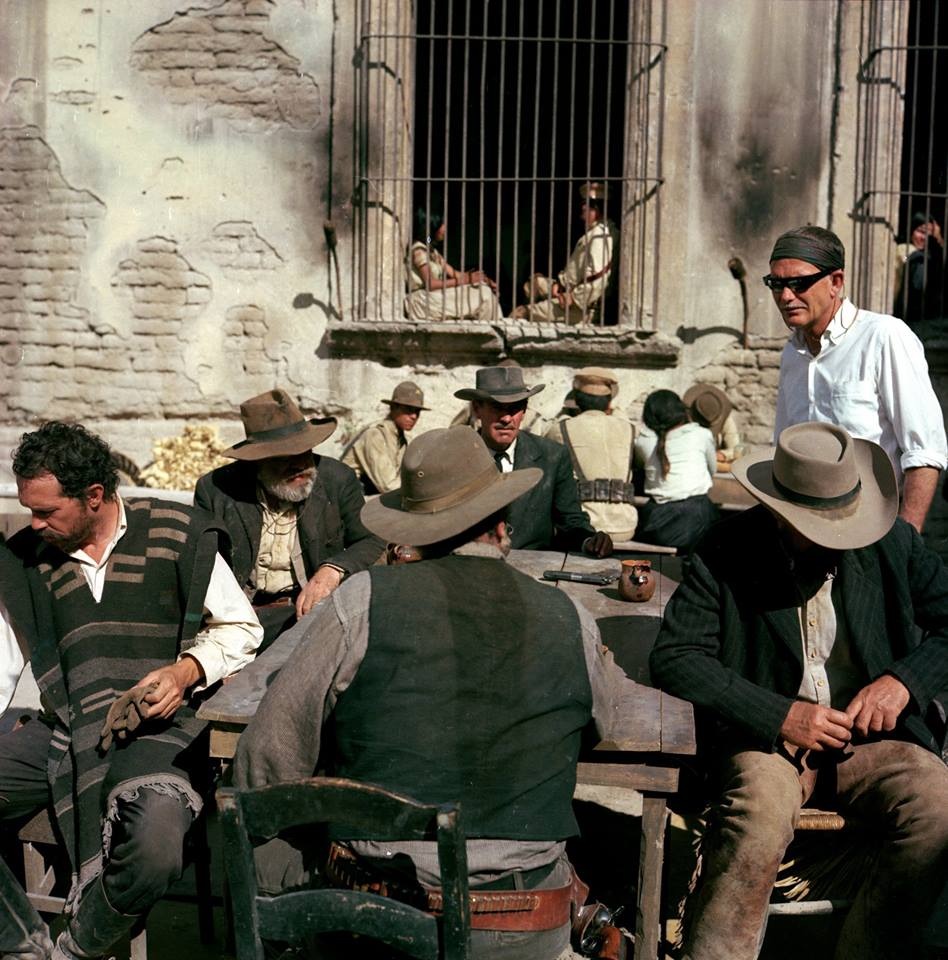
The Wild Bunch has long and literally been the most brutal movie of all time, but also one of the greatest movies about friendship and sacrifice. Pike Bishop (William Holden), Dutch Engstrom (Ernest Borgnine), Lyle Gorch (Warren Oates) and Tector Gorch (Ben Johnson) prefer death to blood-soaked gold and dreamed freedom – in a suicide attempt to rescue their friend Angel (Jaime Sanchez). Four desperados against two hundred Mexican soldiers. The whole thing would have remained at the level of naive notion, hadn’t Peckinpah’s brilliant choreography of the final showdown ended with the total demise of the main characters, emphasizing the apocalyptic nature of the whole scene, thus completing a circle of this bloody poem perfectly with the scene from the beginning of the film.
Sam’s identification with anarchical apostates is complete and fatal. Peckinpah points out the indefinite violence in humans, violence in the outdated outlaws of the “Wild West” whose cruelty has no illusions, always standing by them, knowing that guys like Pike Bishop and the rest can only react as humans at the extreme point of an abyss of violence also created by themselves.
Peckinpah also gives a dose of dignity to the paradigms of order such as the unscrupulous railroad tycoon Harrigan (Albert Dekker in his last role) and the inevitable General Mapache, played by Emilio El Indio Fernandez, Mexican movie legend, bandit, revolutionary, director, actor, poet, killer (Pike tells Dutch respectfully of Harrigan, emphasizing his ability; Mapache is often on the verge of caricature, but also fearless), yet also tells us that the establishment’s representatives are even worse scum than the desperados themselves.
On this occasion, the mention of Sam Peckinpah in the series of negotiations before the beginning of the filming of Mario Puzo’s The Godfather (unlike Leone and Peter Bogdanovich, it never came to a direct offer) seems indicative, for if by chance, instead of Coppola, he happened to had directed that famous film – Sam would probably have run into a sort of antithesis.
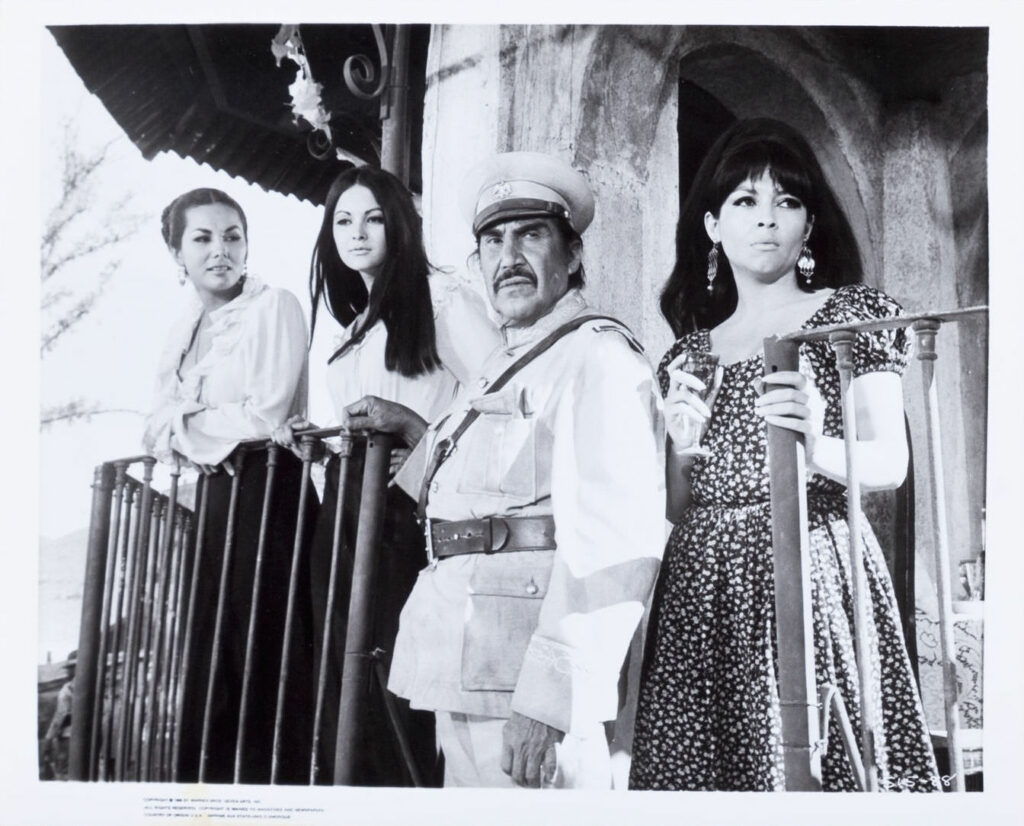
Yes, the renegades of The Wild Bunch are indeed criminals, as are the Puzo’s and Coppola’s mobsters, but these are two opposing types of crimes. The members of Cosa Nostra, both historically and fictitiously, have only one goal – infiltration into the existing system. In contrast, Peckinpah’s bandits do not resist the opportunity to express ridicule and disgust to every type of system. Rather, at the cost of their own downfall – they enjoy pure anarchy.
The one that remains is Robert Ryan in the interpretation of Dick Thornton, seemingly the hardest character to decipher in the film. Former friends on the opposite sides – is the dominant motive for Sam. Obverse and reverse of the same coin; Thornton is Pike’s reflection in the mirror and vice versa; Announcement of the upcoming, Peckinpah’s last western lament – Pat Garrett and Billy the Kid; A schizophrenic projection of Sam Peckinpah; Division of one personality into two; Thornton’s compromise with the system and Pike’s renegade status are also Sam’s metaphorical commentary on his position in Hollywood. There is a bit of Peckinpah in both characters, yet it’s more than clear that Dick Thornton is what Sam Peckinpah is, and Pike Bishop is what he wants to be. Sam’s urge to survive in the harsh Hollywood industry, contradictory to the lunatic self-destruction of that sad man, organizationally and productively (no matter how much he hated the producers) as well as artistically, with all its complexity, is embodied in Dick Thornton and Pike Bishop.
With the memory of Pike Bishop’s only true love – of course, quite renegade – a married woman, this melancholic symphony also receives a balladic intonation.
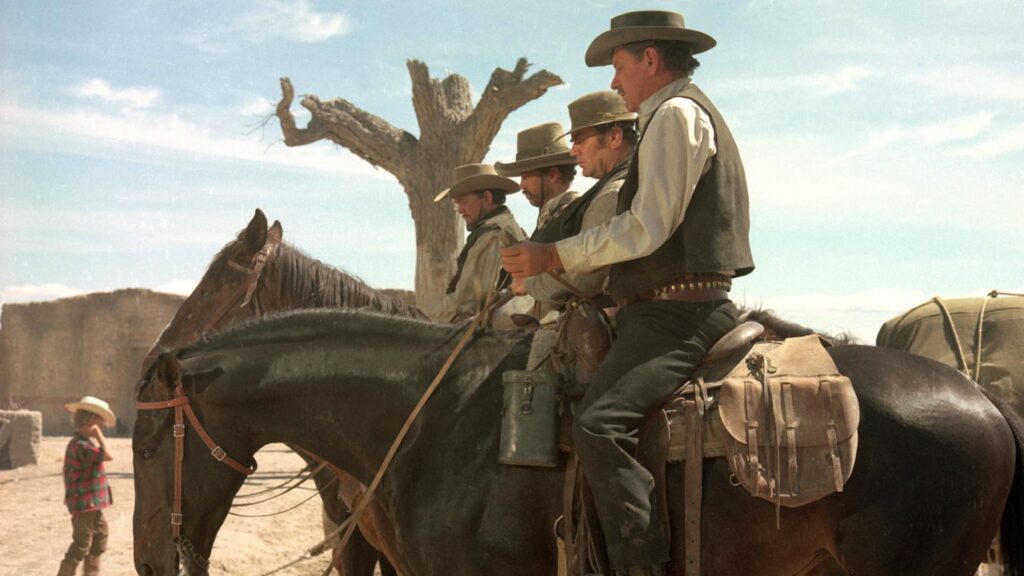
The ultimate opening credits of The Wild Bunch – a small movie in the movie – with the exception of the use of split screen from the beginning of The Ballad of Cable Hogue as well as in the famed Straw Dogs or Bring Me the Head of Alfredo Garcia, in which they’re absent, Peckinpah will use in four more of his films: Junior Bonner, The Getaway , Pat Garrett and Billy the Kid and Cross of Iron.
This year, Vancouver has joined the planetary marking of the half-century of The Wild Bunch. In the drunken and drugged mind of Sam Peckinpah – in one of the countless outbursts when he shot his character in the mirror – Canada could easily resemble reverse Mexico. With its reliance on America in the North, Canada has inspired many as a must-see getaway destination. Yet, Peckinpah found paradise, hell, and redemption for his outlaws on the southern border of America – below, in the haunts of rustic Mexico.
The Wild Bunch occurs during the Mexican Revolution of 1913, just before the complete dusk of humanity – World War I. The Mexican Revolution offered incomprehensible realistic and imaginary potentials, whether a genius such as Ambrose Bierce disappeared there, or the Pike Bishop’s gang has come to an end.
A man who masterfully orchestrated 1288 camera positions and managed to articulate a staggering 3642 mounted frames in a single film – does not deserve to be remembered by vices alone.
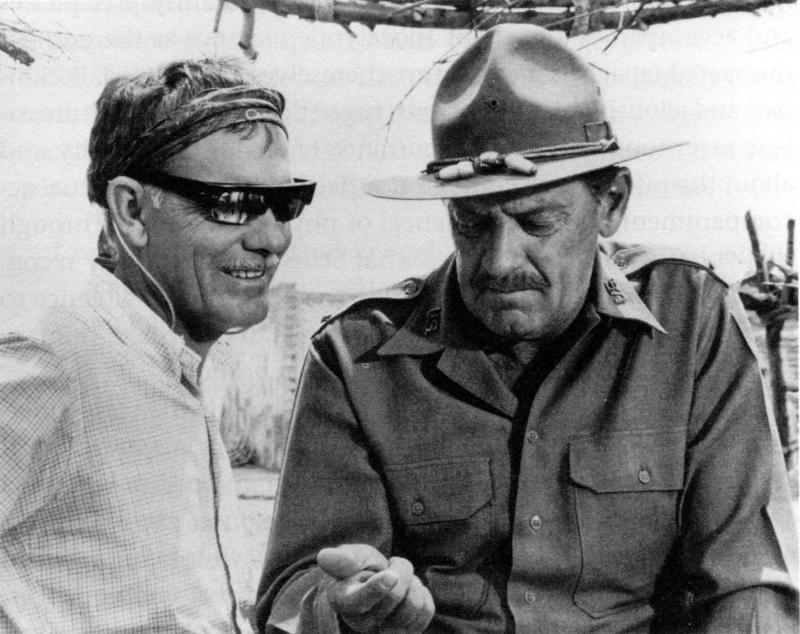
Peckinpah was neither the first nor the last alcoholic and drug addict among artists. The painful subject of an artist and his self-destruction is inseparable from Sam Peckinpah, but let the existing fascinations with his alcoholism and drug addiction be addressed by those infantile ones.
With the bandana headscarf, black glasses, alcohol, cocaine and the insane need to appear to the public worse than he was, he was only trying to hide his hypersensitivity.
The only thing that truly matters are his movies.
Above all – The Wild Bunch!
Djordje Maric


